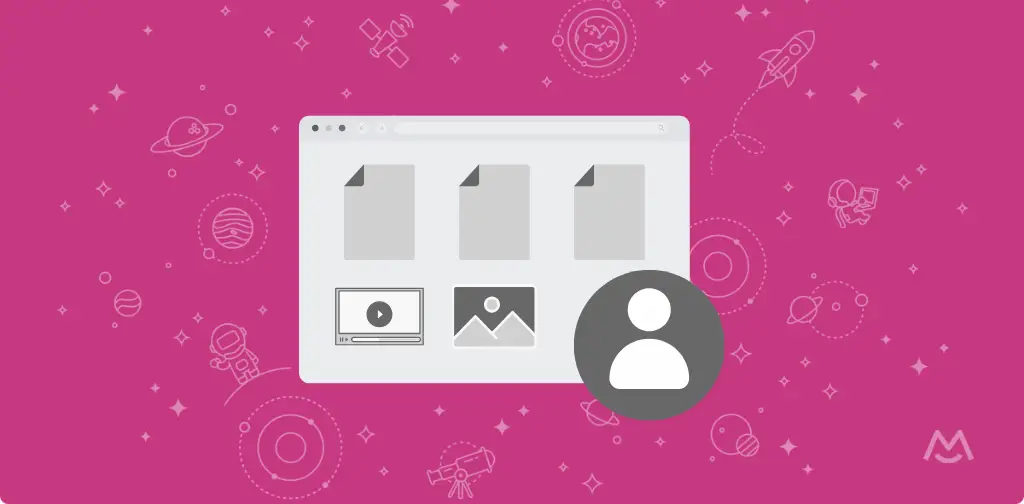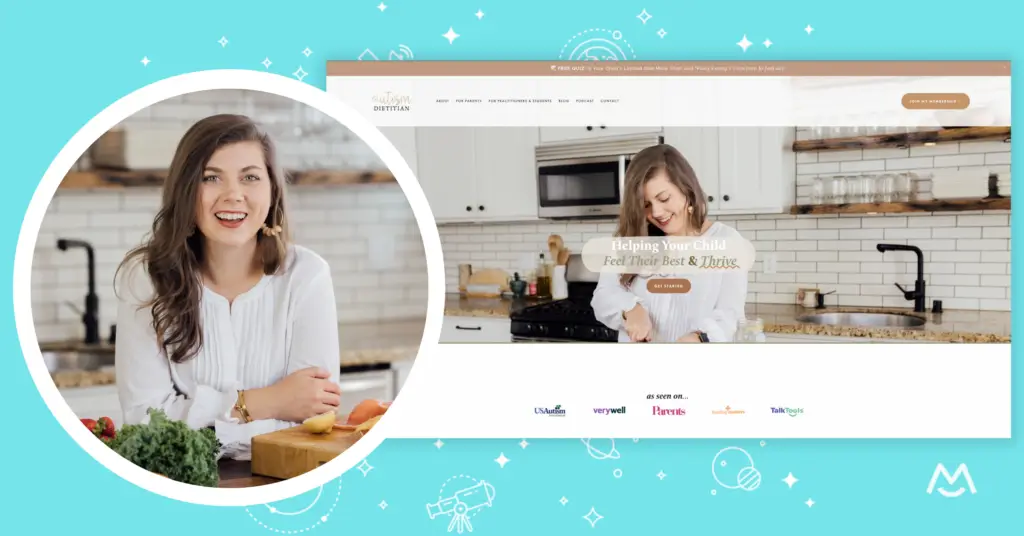Haiden Hibbert
Maybe you’re a therapist, life coach, or influencer in the relationship space and want to focus on a more specific niche.
Or maybe you’ve navigated your own relationship challenges and feel passionate about helping others build stronger connections.
Whatever your background, starting an online relationship coaching business is a great way to turn your passion for helping others into a profitable career.
The best part? You don’t need a formal certification or years of experience to get started (although I’ll share some recommendations for certification programs later in this post!). That means you can get your business up and running quickly—with the right plan in place.
Here are some of the key steps on how to become a relationship coach and launch your business online – in just 48 hours!
Start a Relationship Coaching Business in 48 Hours!
The easiest way to accept membership payments or one-time charges for digital products like online courses, communities, content libraries, and more — all from your own website!
Get started for free! 5 minutes to set up.
Table of Contents
Step 1: Decide What You’re Going to Sell
Before launching, you’ll need to make a few key decisions (and don’t worry—you can always adjust as you go!).
First, define your niche. Relationship coaching is a broad field, so narrowing your focus will help you attract the right clients. Do you want to work with singles, couples, newlyweds, divorcing partners, or parents navigating family dynamics? Getting specific makes marketing your business much easier.
Next, decide on your business model. Will you offer active income like one-on-one coaching, group programs, and workshops? Or do you prefer passive income through online courses, pre-recorded videos, or digital resources that sell on autopilot? Many coaches combine both for flexibility.
There’s no right or wrong approach—just choose what aligns with your lifestyle and business goals!
Step 2: Launch Your Coaching Website
Once you’ve decided on your niche and what you’ll offer, the next step is to create a simple website where people can learn about your coaching services and sign up.
This is the step a lot of business owners get stuck on (cue the overthinking!).
But the truth is, your website will never be finished or perfect, so the best thing you can do is get something up and running and improve it as you grow your business.
If you don’t have web design experience, platforms like Squarespace make it easy with drag-and-drop templates. If you want more customization and flexibility, WordPress is another great option.
To start, all you need are a few key pages:
- Homepage – A clear introduction to who you help and how.
- About Page – Your background, experience, and coaching philosophy.
- Contact Page – A way for potential clients to reach out.
- Services Page – A breakdown of your coaching offers and pricing.
Once your website is live, you’ll be ready to start adding your coaching materials and resources.
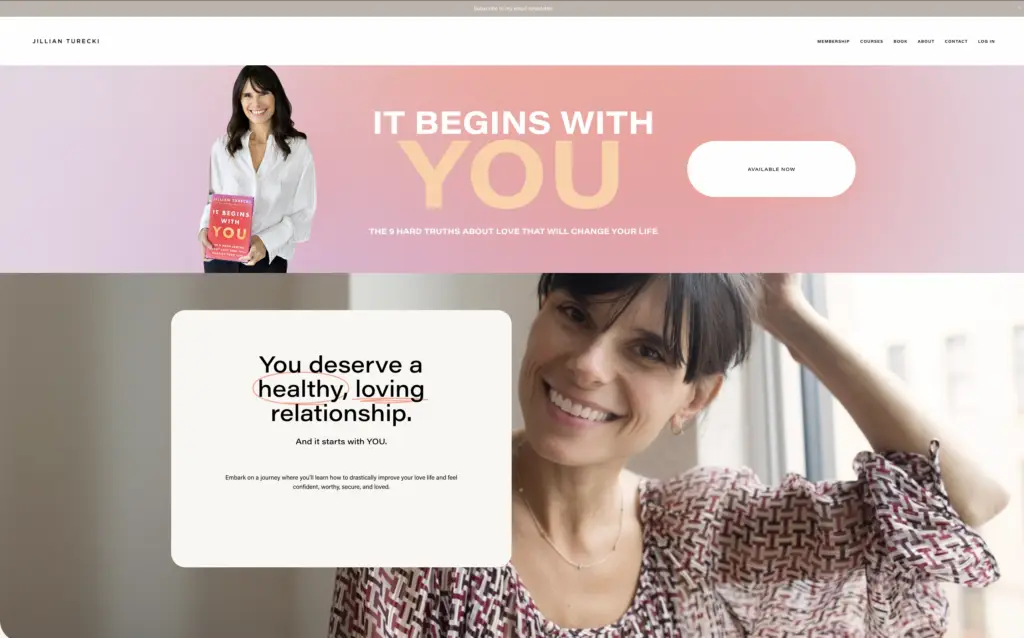
Step 3: Create Your Client Resources and Add Them to Your Site
Now time for the fun part – adding your coaching materials to your website! These might include resources like:
- A content library with videos, courses, or written guides
- Digital workbooks, journals, or templates for clients to use
- A private community or forum for members to connect
- A newsletter, podcast episodes, or other ongoing content
Just upload everything to pages on your site, and don’t worry about pricing just yet – you’ll lock access to these resources in the next step.
If you’re working with 1:1 clients, you can also create private pages just for them. This is useful if you want to upload things like personalized resources, progress notes, or session recordings.
Whether you’re offering a membership, an online course, or one-on-one coaching, this step is all about organizing your content on your site so it’s ready for paying clients.
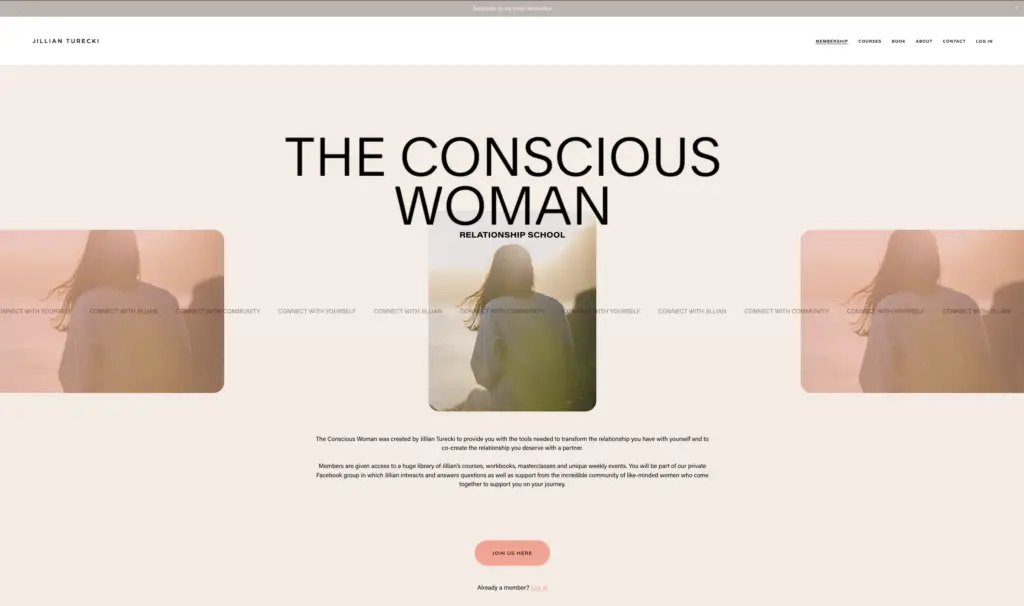
Take Jillian Turecki, for example. She’s a MemberSpace customer, successful author, relationship coach, and creator of the The Conscious Woman Relationship School, a membership that offers:
- Live coaching calls
- Workbooks and blueprints
- Events
- Online courses and masterclasses
- A private Facebook group for support
Her target audience is women who want to “Embark on a journey where you’ll learn how to drastically improve your love life and feel confident, worthy, secure, and loved.”
Step 4: Gate Your Coaching Content
To ensure only paying clients can access your coaching materials, you’ll need to lock your exclusive content behind a paywall.
A tool like MemberSpace makes this easy—you just add a snippet of code to your website, then tell us which pages should be members-only. This will instantly lock those pages, so only paying clients can access your premium content.
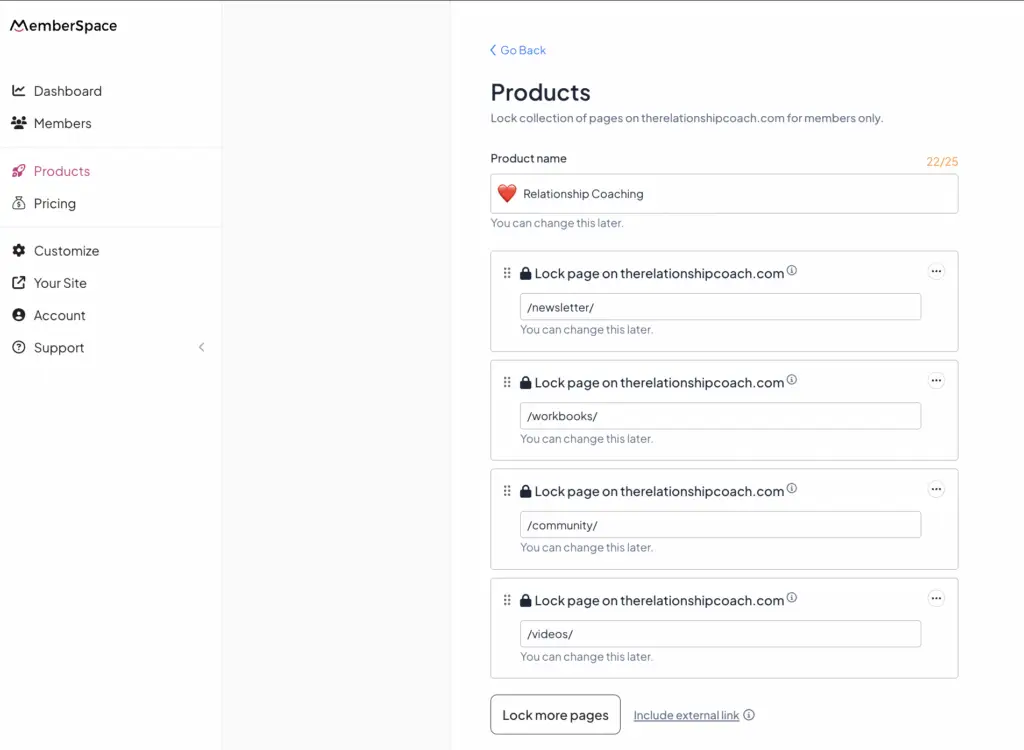
Step 5: Set Your Pricing
Now that your content is gated, it’s time to figure out how much to charge and how to structure your pricing.
With MemberSpace, you can set up pricing however you’d like. You can charge a one-time fee for access to certain content, create a subscription-based membership, or offer payment plans for high-ticket coaching programs. You’ll also decide how often clients are billed and what they get access to at each price point.
Once you’ve created your pricing plans, you’ll get a signup link that you can add to buttons on your website. When clients click the link, they’ll be prompted to sign up, pay, and create an account before they can access your coaching materials.
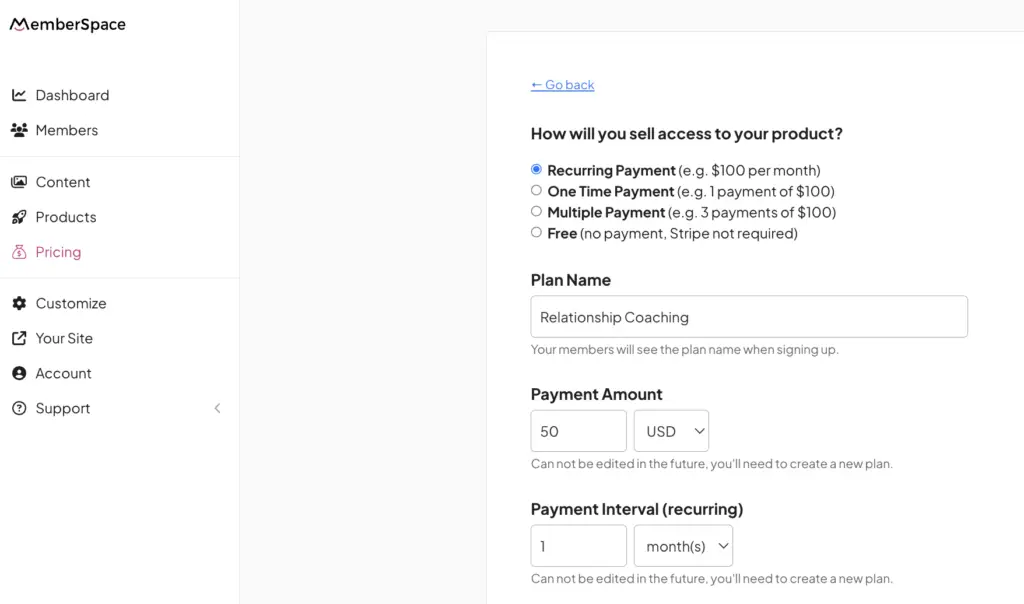
Optional Step: Get Certified!
You don’t technically need to have a formal certification to become a relationship coach, but it certainly does help with your credibility and professional development! There are several online trainings that you can complete to further your education and help you grow your client base, including:
Final Thoughts
Starting a relationship coaching business online isn’t just about selling coaching sessions—it’s about building a brand, creating valuable resources, and setting up a business model that works for you.
Whether you’re offering one-on-one coaching, digital courses, or a full membership experience, the key is to start simple and refine as you grow. Your website, content, and pricing don’t have to be perfect on day one—what matters is getting started.
And you don’t have to do it alone! If you want free resources to help you grow your coaching business, check out MemberSpace University. We consistently add free webinars, events, workshops, templates, and more—all designed to help membership business owners like you succeed. Good luck!


